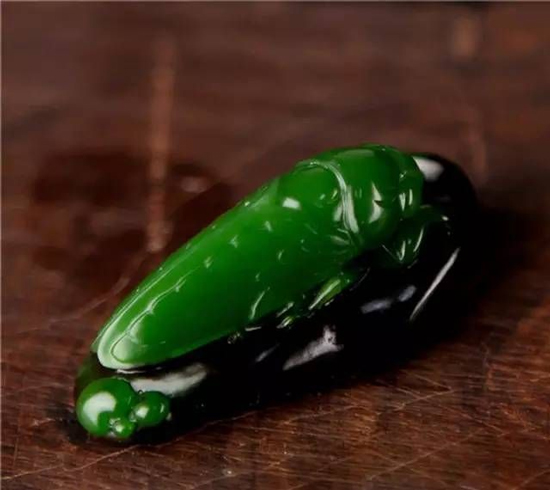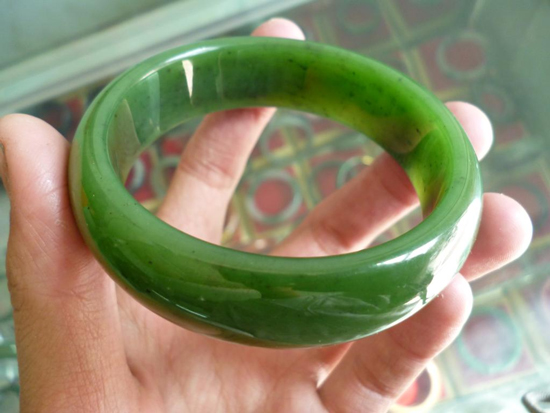The road to development of Jasper Market
The North American jasper supplies found in the Cariboo region of British Columbia (in western Canada) date back more than 4,000 years, but it was not until the gold rush of the 1950s that the jasper in the area was mined by Chinese miners at Fraser River. Discovered and thus entered the market. They transported jasper raw materials to China from these two regions for processing. Some high-quality raw materials were taken away by the royal court and became part of their collection. Since then, Canada's Jasper has been continuously imported into China.

From 1885 to 1949, Canada's Jasper entered the Chinese market through different channels, but the number was quite limited. The lack of raw materials makes it quite expensive. In the early 1930s, among the four famous jade carving masters at that time, one master carved a huge jasper material from non-Canada into a high-quality sculpture. According to reports, this rough stone was obtained at an auction at a final transaction price of 6,000 silver dollars. At that time, the best estimate of the average annual income of people working in big cities such as Shanghai and Beijing was 250 silver dollars. This means that an ordinary urban worker has to work for 24 years to earn enough money to buy jasper raw materials.
In the 1980s, Meikes of Yuxi Group acquired a jade mining company that failed in business. At that time, almost all Jasper was exported to Taiwan. The Taiwan market cannot consume all its products, and it has carved a large amount of raw materials into small ornaments and extremely cheap jewelry for the domestic market and exports. The mainland China market has not yet opened, and the cheap jewellery market has provided enough demand to help develop Canada's jasper industry and have dominated it for nearly 30 years. Meekpies recalled that in the early 1980s, in the tourist shops of Chinatown in San Francisco, 6-8 mm of high-quality jasper beads each cost $5.
Yuxi Group began to export nephrite to China in 1986 and found that the market is resistant to Canadian nephrite. However, Mekpis still has confidence in the future of the Chinese nephrite market. An article in the National Geographic magazine in September 1987 quoted him: "My secret weapon is China. I have already entered that market. Last year I sold 104 tons: 100 tons sold to China, only 4 Tonne was sold to Taiwan.†After 2000, China’s demand increased sharply as China’s growing middle class’s disposable income increased. Nephrite is a very affordable alternative to jade, but it is much more expensive than in the past few decades.
When Mekpis went to Hetian, he found that most of the green Hetian jade actually came from Canada. Local merchants sell these jasper in the name of Hetian, in order to take advantage of the overwhelming historical reputation of this material and obtain higher prices (Glaude Adams, 2009).

Today, jasper in Canada and Russia are more valued in China. More and more dealers are willing to disclose the true origin of their goods to consumers, but in the local market, it is still quite common to classify all the soft jade origins as Hotan. In 2012, at the local Hetianyu Trading Center, only 5 out of 500 to 600 stores were carrying over the inventory of Xinjiang Manas Jasper. Recent reports indicate that this situation remains the same.
Siberian Jasper entered the Chinese market for the first time in the early 1990s through Dongning, a border trade town in Heilongjiang Province, China. In Dongning, more than 100 nephrite merchants are doing business. From 2005 to 2011, due to the shortage of raw materials, the price of white jade soared from $500 per kilogram to $10,000, making it difficult for most consumers. This provides an opportunity for a large number of reasonably priced Jasper to import into China. Between 2005 and 2008, Siberian Jasper received great attention from Chinese consumers. Bracelets and beads from #7 Mine have become a favorite of consumers, while raw materials from #10 Mine are mainly used for engraving.
The most important event in the development of Jasper Market is the 2008 Beijing Olympic Games. Olympic medal materials include nephrite from China. The Chinese government has created an education and publicity campaign to explain its importance. This completely changed the Chinese jade market, causing its demand and price to increase. Before the Olympics, the price of top quality nephrite from Canada was $20 per kilogram. Today, top quality is priced between $200 and $2,000 per kilogram.
The Beijing Olympics also increased the price of jasper imported from Russia, especially the quality raw materials obtained from #7 Mine. After 2008, a relationship between Russia and China from the mine to the market was formed. Russia's nephrite trading and engraving center is formed in border towns such as Beijing, Harbin, Henan, and Dongning and Manchuria.
While realizing the enormous economic potential of Jasper, Russian miners and dealers are constantly raising the price of nephrite raw materials. At the same time, the Russian government has also restricted the supply of nephrite to China. These two factors have put pressure on Chinese business owners and led to a further surge in nephrite prices. At the beginning of 2013, Russian jasper raw materials were imported, and the average price was about US$500 to US$650 per kilogram. By the end of 2014, the average price of Dongning City was around US$1,000 per kilogram. In 2015, the price of high-quality Russian jasper raw materials with cat's eye effect reached 50,000 US dollars per kilogram, while the price of non-high quality cat's eye raw materials was 2,000 US dollars per kilogram.
Lace shorts: at present we have one style,this is a simple design but if u wear it,it will looks very sexy,youthful and full of sunshine,if u have other design,u can also send to us,we will according to ur requirements to do well.if u would like to learn more details,please contact us directly,we will try our best to do well,
Lace Shorts,Lace Shorts Pants,Women Lace Shorts,Lace Short Trousers
Shaoxing PinSheng Garment co,ltd , https://www.psfsshirts.com